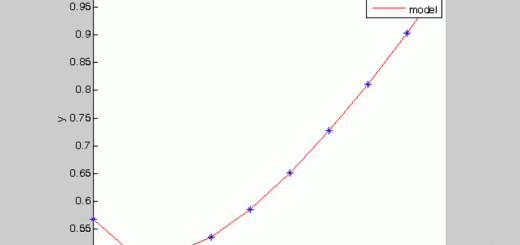Below there are several peculiar counters, used in various algorithms on regression modeling
Contents
Count the features
The primary usage of the counter ‘cntfeatures’ is the feature selection for regression and pattern recognition algorithms. It counts unique numbers from 1 to modulio. Each number is an element in a vector. After overflow the counter resets to zeros. Note that length(cnt) must be equal to modulio.
cnt [1 x modulio] – the prevois value of the counter ib the argument and the next one in the output i [scalar] – dummy variable, must be equal to modulio modulio [scalar] – base modulio to count up.
modulio = 5; % Count unques from 1 to 12345, base 5 cnt=zeros(1,modulio); % Prepare the counter's vector i=0; % Just a variable for the demo purpose while 1==1 % The loop to count up i = i+1; % Increase the demo variable cnt = cntfeatures(cnt,modulio,modulio); % Count up disp(cnt); % Show the counter value if all(cnt == [1:modulio]), break; end % Check for overflow end % The loop end disp(['Variants: ',num2str(i)]); % Show the value of the demo variable
0 0 0 0 1
0 0 0 0 2
0 0 0 0 3
0 0 0 0 4
0 0 0 0 5
0 0 0 1 2
0 0 0 1 3
0 0 0 1 4
0 0 0 1 5
0 0 0 2 3
0 0 0 2 4
0 0 0 2 5
0 0 0 3 4
0 0 0 3 5
0 0 0 4 5
0 0 1 2 3
0 0 1 2 4
0 0 1 2 5
0 0 1 3 4
0 0 1 3 5
0 0 1 4 5
0 0 2 3 4
0 0 2 3 5
0 0 2 4 5
0 0 3 4 5
0 1 2 3 4
0 1 2 3 5
0 1 2 4 5
0 1 3 4 5
0 2 3 4 5
1 2 3 4 5
Variants: 31
Count 2^n combinations of elements in a set
Return vector c plus 1 in the last element, up to the value of b. When overflow in the last element, drop it down to the value of a. When i=overflow in all elements, drop all elements to the values of a.
disp('Here indexes of the features are in the row'); c = zeros(1,4); for i=1:17 c = cntabover(c,0,1); disp(c); end
Here indexes of the features are in the row
0 0 0 1
0 0 1 0
0 0 1 1
0 1 0 0
0 1 0 1
0 1 1 0
0 1 1 1
1 0 0 0
1 0 0 1
1 0 1 0
1 0 1 1
1 1 0 0
1 1 0 1
1 1 1 0
1 1 1 1
0 0 0 0
0 0 0 1
Count 2^n combinations with reinsertion for n=1,2,…
Returns vector c plus 1 in the last element, up to the value of b. When overflow in the last element, drop it down to the value of a. When i=overflow in all elements, it appends the 1st element to the vector c. Its value is a;
disp('Here index is the number of a feature'); c = 0; for i=1:17 c = cntabappend(c,1,3); disp(c); end
Here index is the number of a feature
1
2
3
1 1
1 2
1 3
2 1
2 2
2 3
3 1
3 2
3 3
1 1 1
1 1 2
1 1 3
1 2 1
1 2 2
Also see Matlab combinatorics
The problem is: useful functions are in toolboxes, not in the Matlab kernel combntns (Mapping toolbox) All possible combinations of set of values, recursive function
combos = combntns(1:5,3)
% combnk (Statistics toolbox) Enumeration of combinations
combos =
1 2 3
1 2 4
1 2 5
1 3 4
1 3 5
1 4 5
2 3 4
2 3 5
2 4 5
3 4 5
c = combnk(1:4,2)
%combvec (Neural network toolbox) Create all combinations of vectors
a1 = [1 2 3; 4 5 6];
a2 = [7 8; 9 10];
c =
3 4
2 4
2 3
1 4
1 3
1 2
a3 = combvec(a1,a2)
% perms (Statistics toolbox) Enumeration of permutations
a3 =
1 2 3 1 2 3
4 5 6 4 5 6
7 7 7 8 8 8
9 9 9 10 10 10
perms([2 4 6])
% nchoosek (MATLAB Function Reference) Binomial coefficient or all combinations
ans =
6 4 2
6 2 4
4 6 2
4 2 6
2 4 6
2 6 4
nchoosek(2:2:10,4)
ans =
2 4 6 8
2 4 6 10
2 4 8 10
2 6 8 10
4 6 8 10
And embedded set operations
% intersect, ismember, issorted, setdiff, setxor, union, unique
% this file: demo_principal_component


